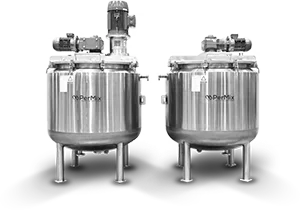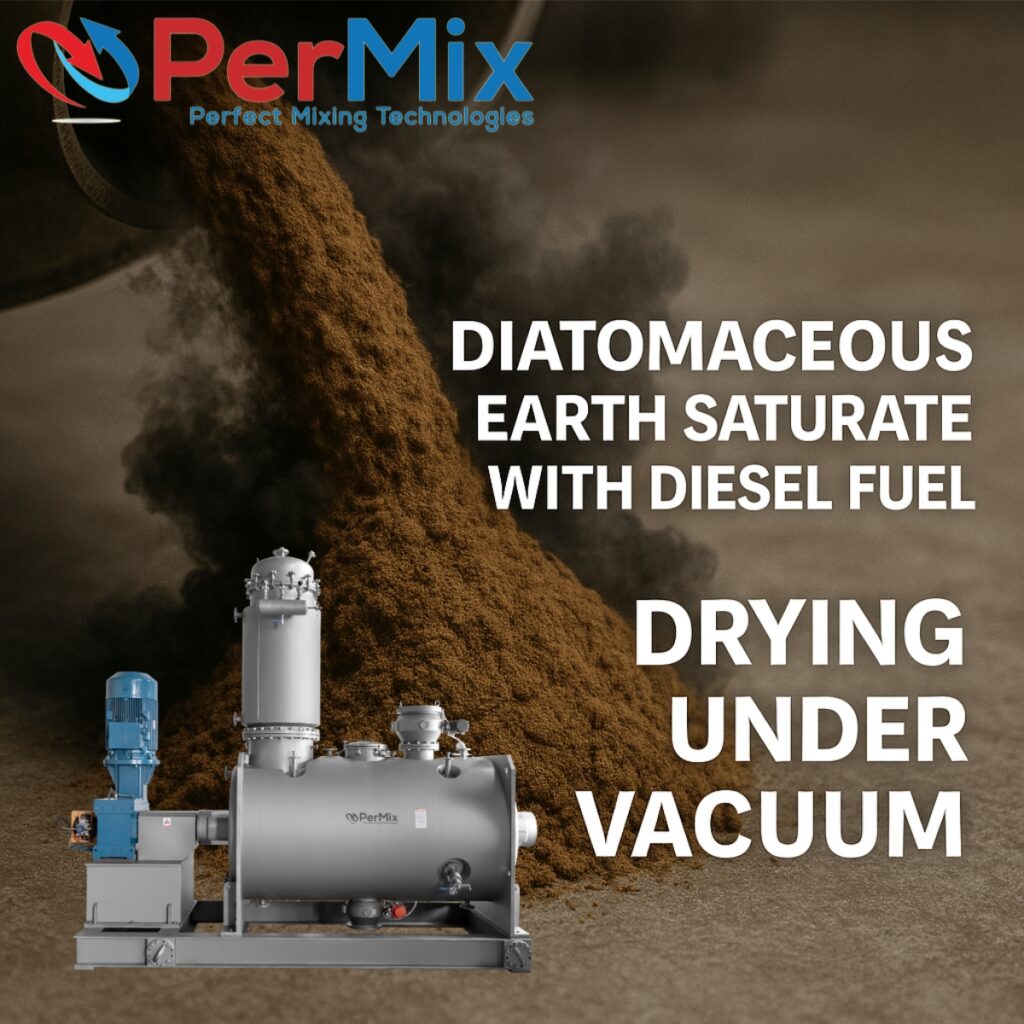Industrial Mixers
PerMix News & Updates



PerMix Vacuum Plow Mixer & Dryer vs. Traditional Drum Dryer: Which Is Better for Diesel-Saturated Diatomaceous Earth?
Processing diatomaceous earth saturated with diesel fuel is a challenge. Traditional rotary drum dryers have long been used to remove moisture and hydrocarbons, but they come with drawbacks: high operating temperatures, uncontrolled volatile organic compound (VOC) emissions, safety concerns, and limited solvent recovery.
This is where the PerMix Vacuum Plow Mixer & Dryer provides a safer, more efficient, and environmentally responsible solution.
Drum dryers rely on hot air convection. For materials containing diesel, that means large volumes of vaporized hydrocarbons released into the atmosphere. Not only does this require costly emissions controls such as RTOs (regenerative thermal oxidizers), but it also introduces fire and explosion risks. In addition, drum dryers often operate at higher temperatures, risking product degradation and energy waste.
The PerMix Vacuum Plow Mixer & Dryer solves these challenges with advanced vacuum drying and intensive plow mixing:
Diatomaceous earth is abrasive. PerMix units can be built with Hardox or stainless steel construction to withstand wear, while jacketed designs (steam or thermal oil) ensure precise thermal control. The result is a rugged, sanitary, and versatile system tailored to the toughest industrial drying applications.
For diesel-saturated diatomaceous earth, the PerMix Vacuum Plow Mixer & Dryer offers a superior alternative to traditional drum dryers. It delivers safer operation, solvent recovery, lower emissions, and greater process control—all in a compact, efficient footprint.

| Factor | Rotary Drum Dryer | PerMix Vacuum Plow Mixer/Dryer |
|---|---|---|
| Drying mechanism | Convective: hot gas stream through a rotating cylinder. | Indirect + vacuum: heated jacket + intense plow mixing; vacuum lowers boiling point; optional N₂ sweep. |
| VOCs / odors (diesel) | Large hydrocarbon off-gas stream; usually needs RTO/condensation + permits; fire/flash risk in the gas path. | Closed, small vapor stream; easy staged condensation + recovery; vacuum keeps O₂ low; inherently safer with Ex-rated build. |
| Temperature | Higher bulk and gas temps to drive evaporation; hot spots possible. | Lower product temps for same evaporation (vacuum); gentler on DE; uniform heat via frequent turnover. |
| Product quality | Potential agglomeration, carry-over dust; broad residence-time distribution. | Agglomerate control with choppers; uniform, dust-tight discharge; narrow, repeatable batch profile. |
| Cycle time | Good for constant high tonnage once tuned; long warm-up; changeovers are cumbersome. | 20–90 min typical batch windows depending on load/target residuals; fast heat-up; easy recipe changes. |
| Solvent recovery | Inefficient unless you add a condenser train + carbon + RTO; big air volumes. | Efficient two-stage condenser + cold trap + knock-out; small vapor volumes = smaller utilities. |
| Safety/explosion | Hydrocarbon vapors + hot air + dust → careful with LEL; more interlocks. | Vacuum/low O₂ + closed system; Ex-motor/controls, N₂ purge, gas monitoring—risk engineered down. |
| Footprint/utilities | Large footprint; high airflow and gas handling. | Compact skid: jacket heating (steam/thermal oil), vacuum pump, condensers; lower overall utilities. |
| OPEX | High when treating large VOC streams (fans, RTO fuel) + wear from DE dust. | Lower gas handling, lower temps; wear managed with Hardox/SS contact parts. |
| CAPEX | Lower if you don’t add full VOC control; higher total if you do. | Higher than a bare drum, but typically lower than a drum + full VOC abatement system. |